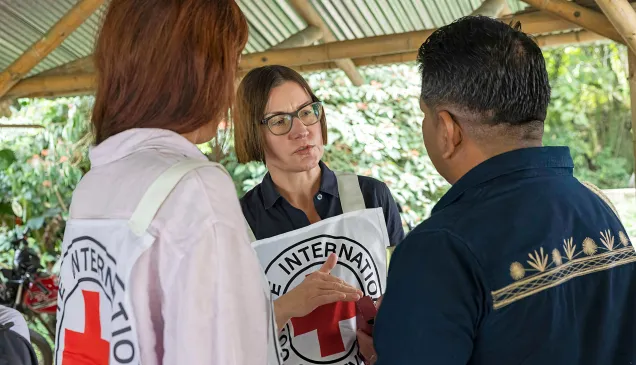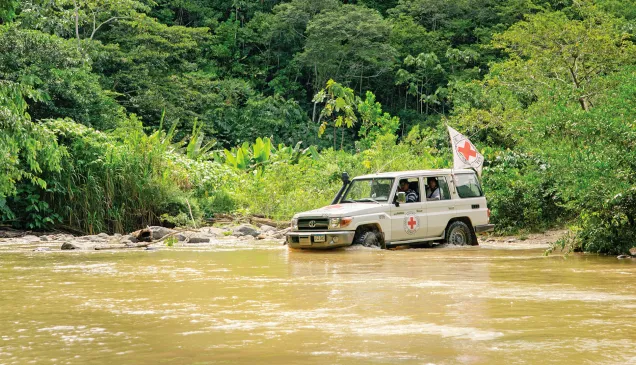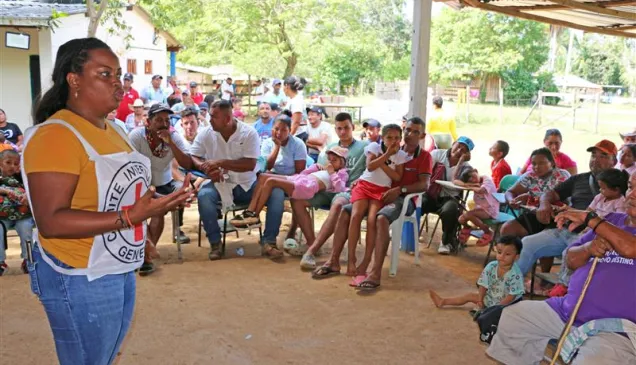War should not remain the status quo in Colombia
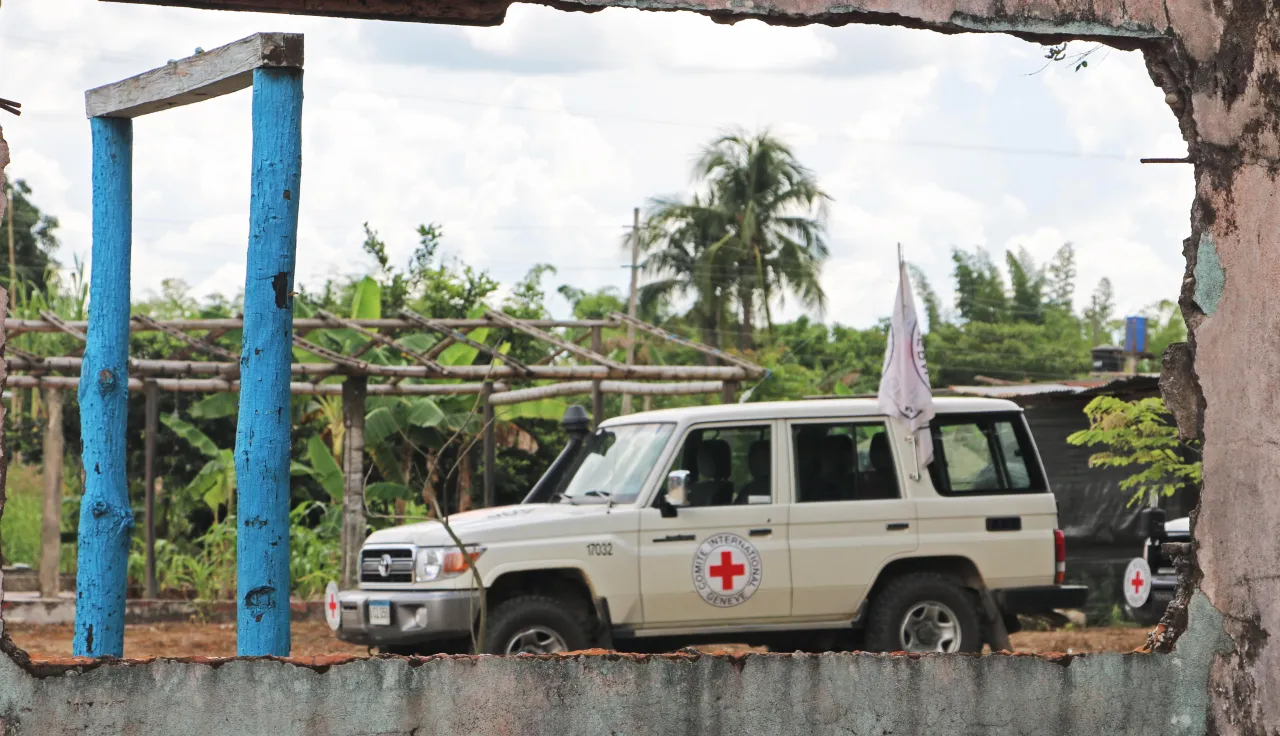
Thousands of Colombians continue to live in the shadow of armed conflict, suffering the effects of a situation they have no control over at all.
As Colombia continued to focus on countering the health, economic, and social effects of the COVID-19 pandemic, the humanitarian consequences in the country worsened.
According to the figures, in 2021 most of the effects derived from armed conflicts and violence reached the highest level of the last five years.
Our analysis of the situation is that there are currently six armed conflicts occurring in Colombia (see text box below), alongside other types of violence, all of which are drastically affecting people's lives. The reconfiguration of non-state armed groups and the rise in armed clashes, social control and territorial disputes have intensified pressures on the civilian population and presented new challenges for humanitarian assistance.
We also note with concern that those participating in the hostilities are taking actions that are not in line with international humanitarian law and other humanitarian standards.
In 2021, this situation affected the civilian population and those who stopped participating in the hostilities through threats, homicides, arbitrary deprivation of liberty, restriction of movement, displacement, association of children and adolescents with weapon carriers, sexual violence, use of explosive hazards with indiscriminate, looting and cruel, inhuman or degrading treatment, among others.
Other humanitarian issues arose owing to armed groups being near to civilians and their property (for example, in houses, schools, health centres and religious sites) without applying the principle of precaution – a pillar of international humanitarian law intended to protect civilians from the effects of hostilities.
Poverty and the weak presence of the State in remote areas mean that the intensification of armed conflicts has a deeper effect on populations that are already in a situation of vulnerability
The departments worst affected by armed conflicts and violence are Antioquia, Arauca, Bolívar, Cauca, Córdoba, Chocó, Norte de Santander, Nariño, Valle del Cauca, along with other less densely populated departments, such as Caquetá, Putumayo and Guaviare. Rural communities in these areas are overcome by fear and unable to carry out their livelihood activities or access basic services owing to the presence of explosive hazards or armed groups.
Armed conflict and violence are a feature of daily life in some urban areas too, with a direct impact on civilians. Some urban areas are also experiencing difficult times in which armed conflicts and violence shape daily life and have direct consequences on the civilian population. Like rural communities, these urban dwellers are struggling to access health and education services, while also contending with the rising cost of food and travel.
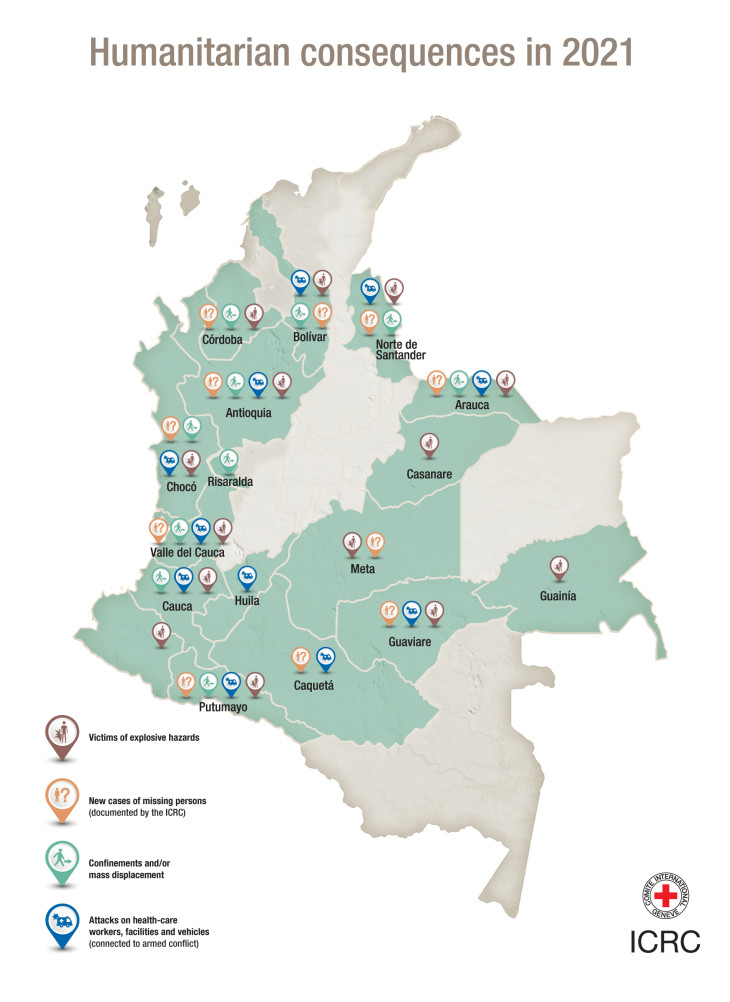
This map represents the humanitarian situation in Colombia during 2021.
Armed conflicts in Colombia
- Colombian government vs. National Liberation Army (ELN)
- Colombian government vs. Autodefensas Gaitanistas de Colombia (AGC)
- Colombian government vs. Former members of FARC-EP not currently covered by the Peace Agreement
- Former members of FARC-EP not currently covered by the Peace Agreement vs. Segunda Marquetalia
- Former members of FARC-EP not currently covered by the Peace Agreement vs. Comandos de la Frontera - EB
One of the most concerning humanitarian consequences we are seeing is the increase in the number of victims of explosive hazards, which in one year grew by 24% compared to 2020. It is a situation that also generates confinements and displacements, and leaves communities in fear, because walking the wrong path can change their life forever, or even take it away.
Another cause for alarm is the fact that, in 2021, we recorded 168 new cases of disappearance related to armed conflicts and violence.
At the same time, all parties to the armed conflicts are continuing to link them to their ranks, or use them as informants, among other tasks.
A lack of opportunities for young people, together with the closing of education centres due to the pandemic, is part of the problem. Weapon bearers also entice children and young people with financial incentives, incite them using alcohol and drugs, or force them to join up by threatening them or their families. These underage recruits are often completely unaware of the risks involved. Lives are destroyed and the repercussions felt by entire families and communities.
At the same time, our work in areas affected by armed conflict and violence allows us to affirm that sexual violence continues to be an invisible problematic in these places. It is used not only to intimidate and punish individuals and communities, but also sometimes as a demonstration of power and territorial control.
Although there is information about it, it is difficult to establish the real magnitude of this tragedy due to the consequences experienced by the victims, which leads them to remain silent, such as the feeling of guilt, shame, fear of retaliation, among others. This prevents those who survived from going to institutions, so it is very likely that present an underreporting in the figures and encounter difficulties in accessing care routes.
To stay or to go
Confinement and displacement are two sides of the same coin. In both cases, people's lives are crossed by making a decision: stay or leave to survive.
In 2020, the number of people displaced or confined was already concerning. Yet, in 2021, the numbers kept rising. Official data shows that 52,880 people were affected by mass displacement, 77,568 people by individual displacement, and 45,108 people by confinements. Behind the figures lies the reality that these people's lives have been completely turned upside down.
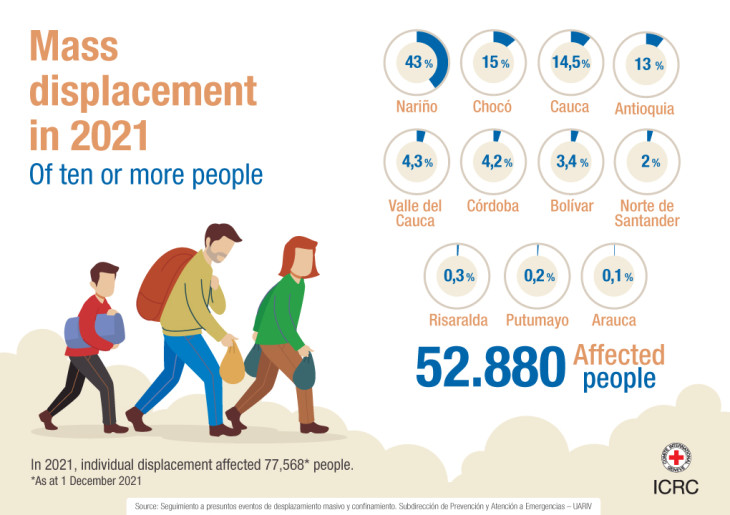
Armed conflicts also continued to affect health workers in 2021. Figures from the national healthcare board reveal that 18 % of attacks on health workers, facilities and vehicles were connected to armed conflicts, although severe underreporting means that the real figure could well be higher.
In light of this situation, we call on all weapon bearers in Colombia to protect those not participating in the hostilities from their effects. Compliance with international humanitarian law and other humanitarian standards is not optional.
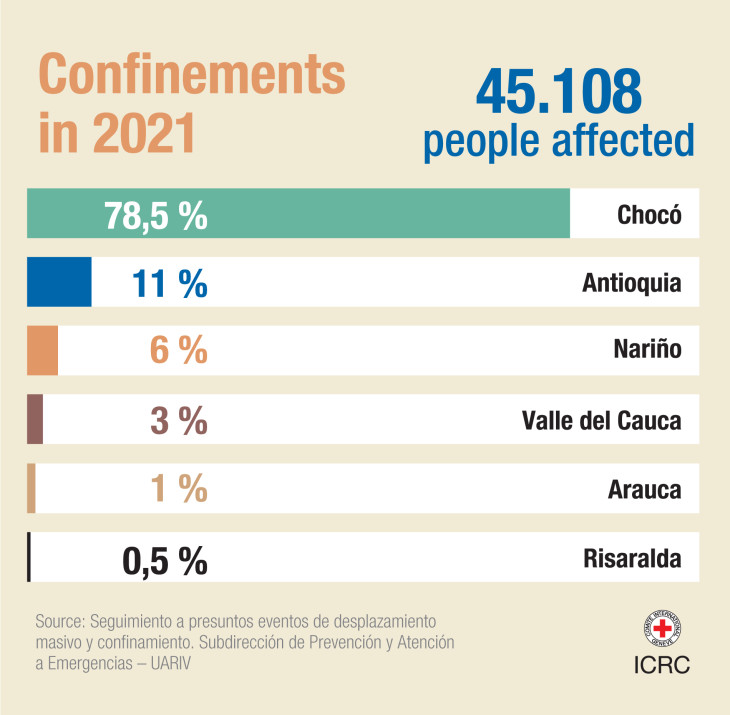
About 'Humanitarian Challenges 2022'
- Head of Delegation Editorial: listening to the voices of victims.
- Explosive hazards in Colombia: a latent threat.
- Missing persons: a humanitarian tragedy that must not be forgotten.
- Health care in danger.
- Prisons, migration and use of force.
- Confidential dialogue with weapon bearers.
- Calls to action from the ICRC.

